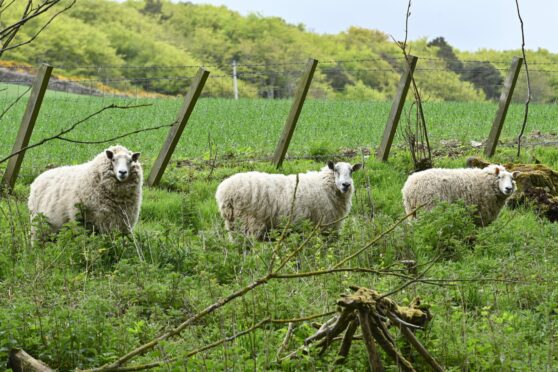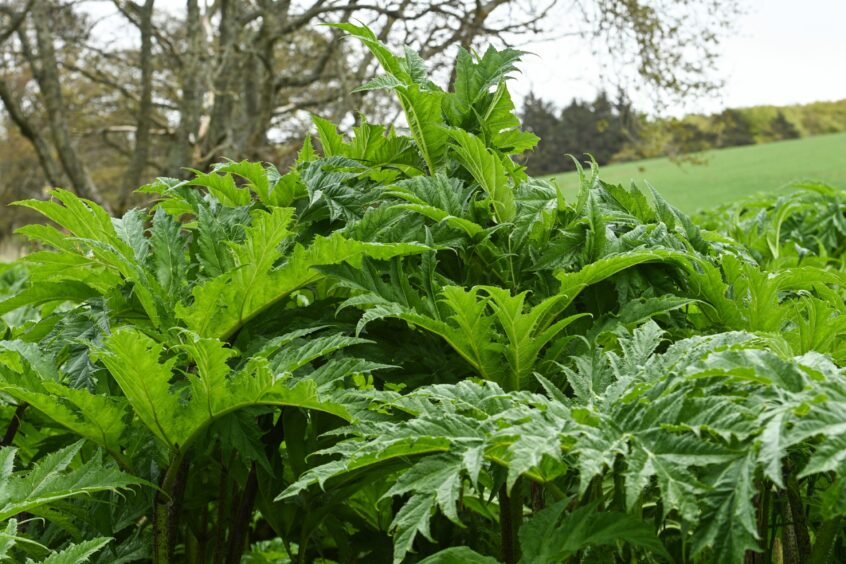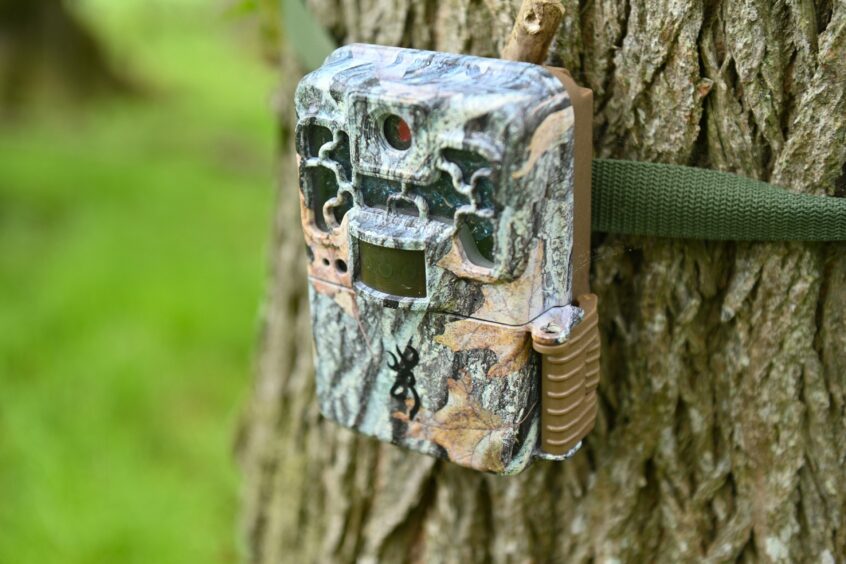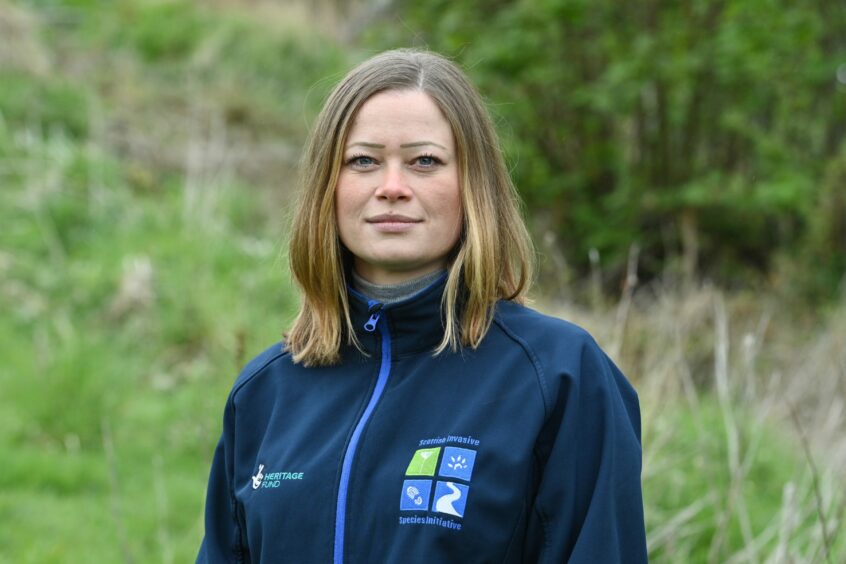A four-year trial has found sheep grazing effectively reduces the spread of hogweed – a highly invasive and dangerous plant.
A flock of sheep was introduced to a strip of woodland alongside River Deveron as part of a trial to tackle giant hogweed in 2019.
They were placed there by the Scottish Invasive Species Initiative (SISI) to munch down the plant stems until they are little more than stumps in the ground.
Known for its toxic sap that can cause burns, blisters and even blindness, giant hogweed is an invasive non-native species spreading uncontrollably across Scotland for decades.
Each seed head can produce up to 50,000 seeds that can all survive up to 10 years.
Praise for ‘alternative approach’
Normally, landowners wage chemical warfare against the infestation – with treatment needing to be carried out consistently for up to 10 years to exhaust the seed bank.
However, this can be time-consuming, costly, and even physically challenging.
But now, sheep with a taste for hogweed are hailed as “wooly warriors” as they graze on the plant with no adverse effects from the sap.
Following the trial, it has been found that the grazing depletes the resources stored in the plant’s taproot and eventually kills it off.
Dan Gordon, landowner of the Macduff trial site, said: “It’s amazing to see the progress made over the last four years.
“The giant hogweed was completely dominating the woodland and would have been really tricky and costly to deal with using pesticides.
“The Scottish Invasive Species Initiative provided a very welcome opportunity to try an alternative approach – I’m really pleased with the results.”
Finding the balance with sheep grazing
Monitoring the effect of the sheep on both the giant hogweed and native vegetation was an integral part of the trial – especially managing to strike the right balance.
Karen Muller, the project officer, said: “The monitoring undertaken was really important as it allowed us to adjust our grazing regime each year and find the right balance between grazing the giant hogweed and avoiding overgrazing – thereby protecting native plant species.
“We reduced grazing pressure over the first few years and settled on a regime that controlled giant hogweed with limited impacts on native flora.”
Project manager Callum Sinclair added: “We are delighted to share this management guidance and hope it will help to inform and encourage others interested in using sheep grazing as a sustainable, long-term method of giant hogweed control.
“We’d especially like to thank Dan Gordon from Kirkside Farm and our colleagues at the University of Aberdeen for their commitment, hard work and support on this project at Macduff.”
Knowledge gained in the trial, as well as key tips for success, are available online now.




Conversation